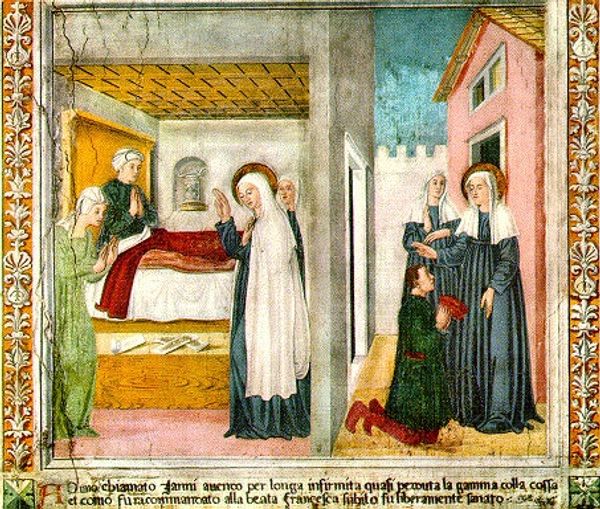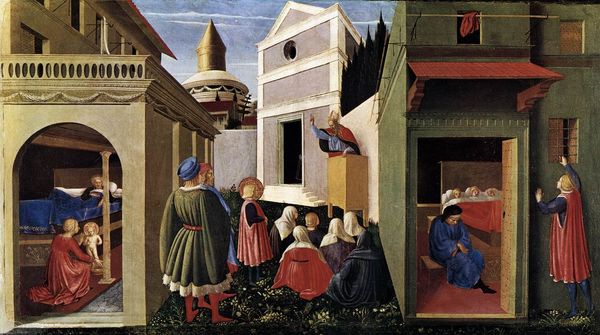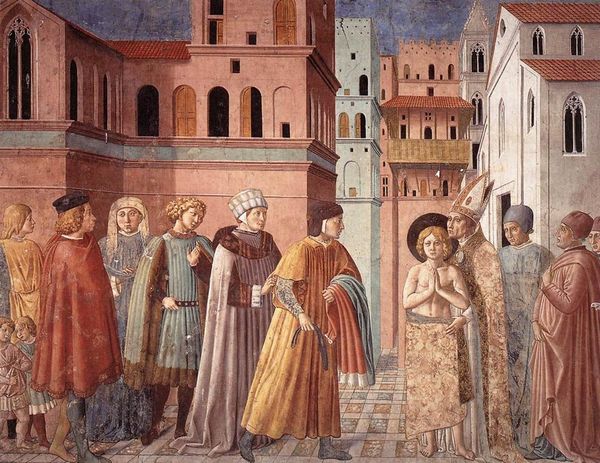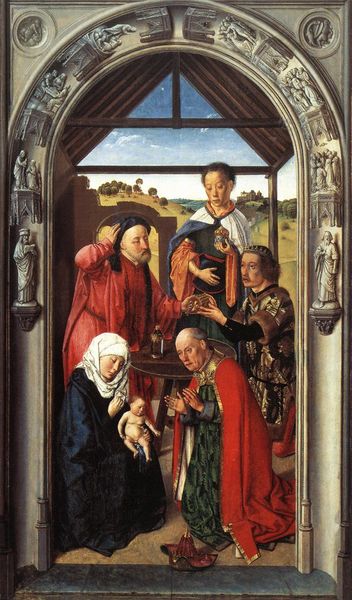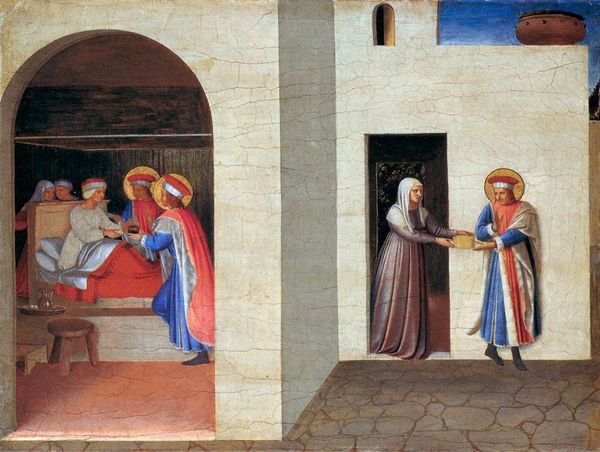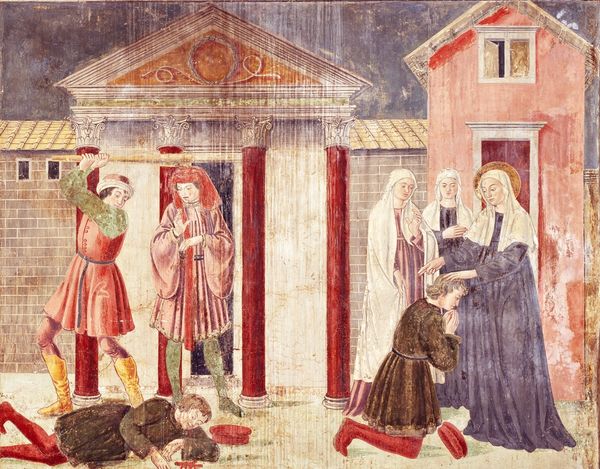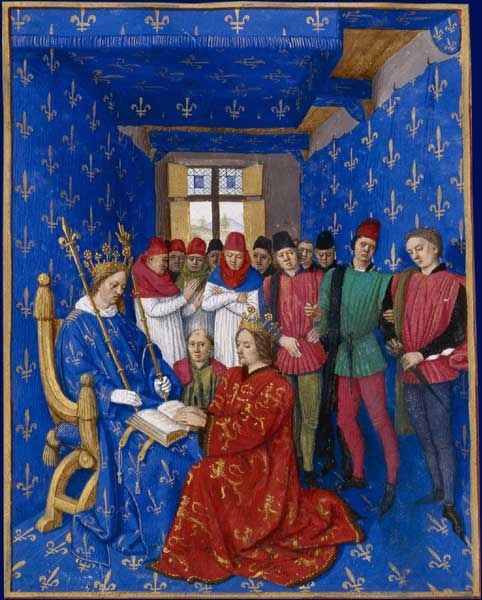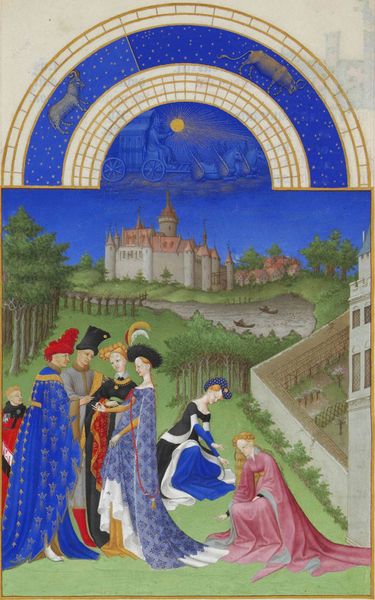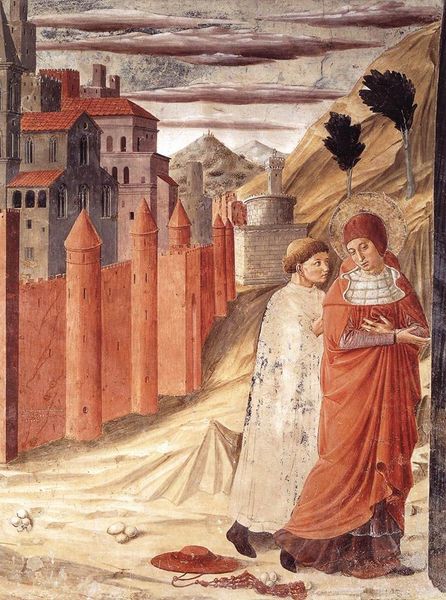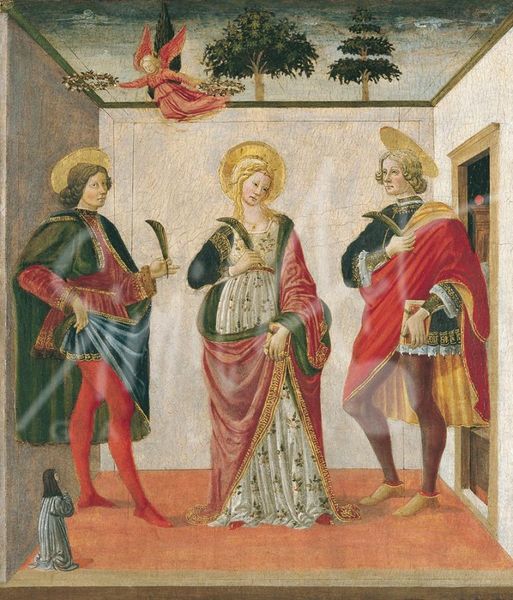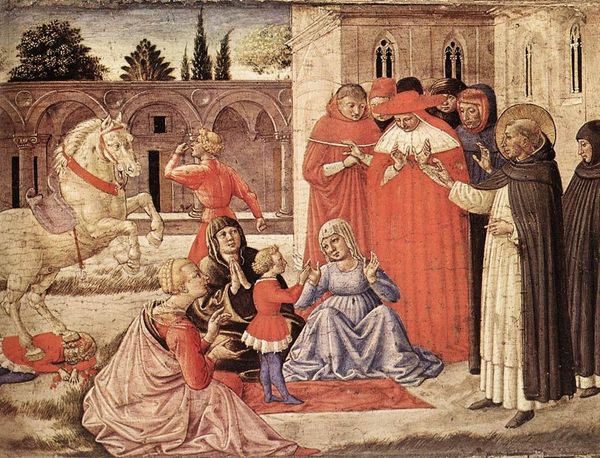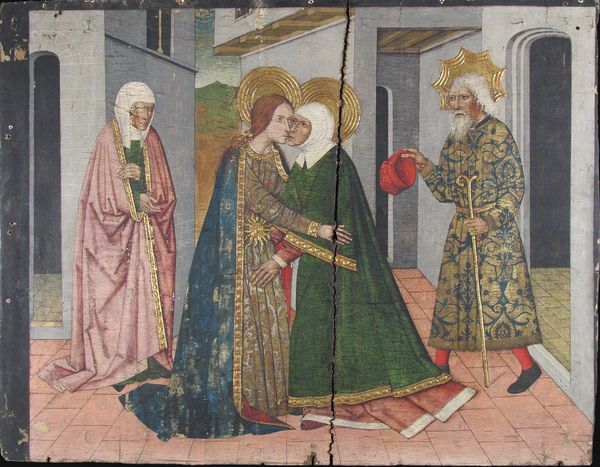
Santa Francesca Romana E Il Miracolo Del Grano, Monastero Di Tor De Specchi 1468
0:00
0:00
painting, fresco, mural
#
narrative-art
#
painting
#
figuration
#
mural art
#
fresco
#
oil painting
#
painting art
#
genre-painting
#
history-painting
#
italian-renaissance
#
mural
Copyright: Public domain
Curator: This fresco, "Santa Francesca Romana E Il Miracolo Del Grano, Monastero Di Tor De Specchi," was created in 1468 by Antoniazzo Romano. What’s your first impression? Editor: A feeling of serene, almost hushed generosity. The scene is framed in a way that feels both communal and sacred. The repetition of the trays overflowing with grain evokes abundance. Curator: It’s compelling how Antoniazzo uses this imagery to elevate Francesca Romana as an archetype of selfless charity. We see the saint twice – once doling grain to the poor, and again overseeing the miracle. Considering the Italian Renaissance focus on humanism, it's interesting to observe how Antoniazzo depicts women as central figures in both charitable acts and divine interventions, offering a fascinating perspective on the era’s gendered dynamics and how female agency could be constructed around religious roles. Editor: Absolutely. Grain is one of humanity's most enduring symbols; it suggests sustenance, community, and survival. The miracle itself reinforces the notion that divine providence rewards earthly virtue. And Romana has a halo around her head. The presentation feels almost iconic. But in the midst of all of the religiosity we should also note that Romana also played an instrumental role in building her Monastery in Tor de’ Specchi in 1425 as an act of true resistance of societal marriage constrictions and female freedom in the Church. Curator: Yes, her narrative, as seen here, highlights this intersection of social action and religious conviction that complicates simple notions of the era's power structures. And let’s consider that Antoniazzo created this image 24 years after she founded the Monastery, solidifying the visual representation of her legacy. Editor: Indeed, it speaks to the power of images to shape cultural memory and encode particular narratives for posterity. The consistent visual elements serve as mnemonic devices, embedding Francesca Romana's acts into the collective consciousness. Curator: Understanding that this work exists as both a testament to religious devotion and also within the complex realities of women, labor, and power in the early Renaissance provides critical depth to our interpretation. Editor: Yes, analyzing this miracle in relation to gender dynamics, poverty, and artistic agency lets us delve beyond a purely art historical reading. Hopefully we can explore these ideas in even more depth in our coming publications.
Comments
No comments
Be the first to comment and join the conversation on the ultimate creative platform.
